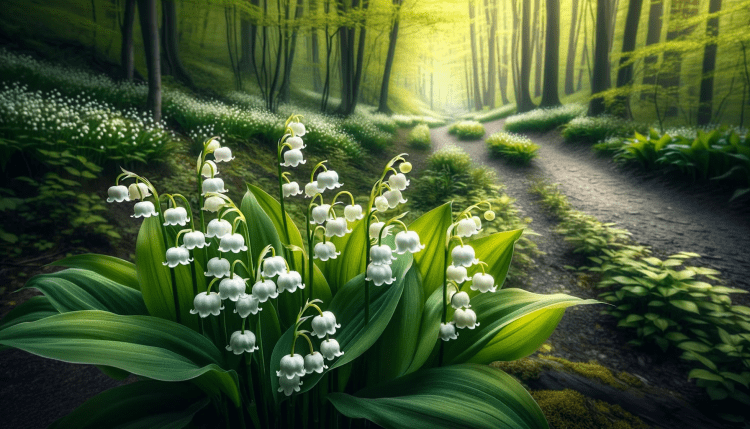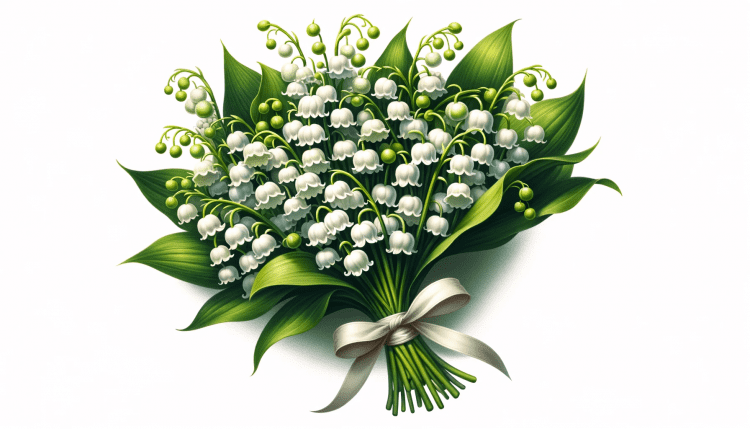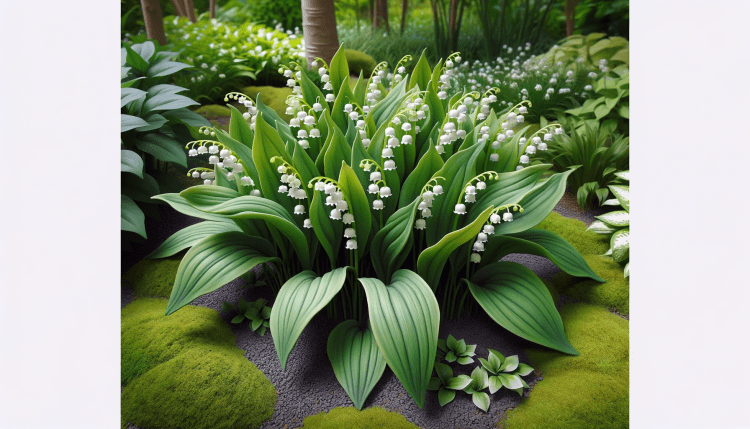
Quick Identification Guide for Lily of the Valley (Convallaria majalis):
Appearance:
- Small, bell-shaped, white flowers that hang from a single, arching stem.
- The flowers have a sweet, strong fragrance and are usually in bloom in late spring.
- Leaves are broad, green, and oblong, growing at the base of the stem.
Growth Habit:
- It’s a perennial plant that spreads through underground rhizomes.
- Typically grows to about 6 to 12 inches in height.
Habitat:
- Native to temperate areas of the Northern Hemisphere, including Europe, Asia, and parts of North America.
- Commonly found in woodland areas, preferring shady and moist conditions.
Plants Commonly Confused With:
- Solomon’s Seal (Polygonatum): Similar arching stems but Solomon’s Seal has larger, alternate leaves and its flowers hang in pairs.
- Muguet (Lilium): Another lily with similar-looking white flowers but larger in size and growing in a different pattern.
- Wild Garlic (Allium ursinum): Similar leaf structure, but wild garlic has distinct garlic-scented leaves and star-shaped flowers.
Cultivation and Care:
- Often grown in shady garden areas or as ground cover under trees.
- Prefers moist, well-drained soil and can spread rapidly once established.
Symbolism and Use:
- Symbolizes the return of happiness and is often associated with traditional May Day celebrations.
- Used in perfumery and sometimes in traditional medicine, though it should be noted that all parts of the plant are highly poisonous if ingested.
Toxicity:
- All parts of Lily of the Valley are toxic, containing cardiac glycosides.
- Can be dangerous to children, pets, and livestock if ingested.
Lily of the Valley is prized for its delicate appearance and enchanting fragrance. Despite its toxicity, it remains a popular choice for shaded garden areas and as a cut flower in floral arrangements.

Quick Facts About Lily of the Valley (Convallaria majalis)
Family: Asparagaceae, previously classified under Liliaceae.
Origin: Native to temperate regions of Europe and Asia.
Growth Habit: A perennial plant that spreads through rhizomes under the ground.
Height: Typically grows to about 6 to 12 inches tall.
Leaves: Features large, oblong, bright green leaves that grow from the base.
Flowers:
- Small, bell-shaped, white flowers that dangle from a single, arching stem.
- Known for their sweet and potent fragrance.
- Bloom in late spring, typically around May.
Toxicity: All parts of the plant, including flowers, berries, and leaves, are highly toxic if ingested.
Habitat: Thrives in cool, temperate woodlands; often found in shaded, moist areas.
Cultivation: Popular in gardens for ground cover, especially in shaded areas. Prefers moist, well-drained soils.
Symbolism: Symbolizes the return of happiness, humility, and sweetness. It’s often associated with traditional May Day celebrations.
Uses:
- Perfumery: Its fragrance is used in perfumes and scented products.
- Medicinal: Historically used in herbal medicine, though its use is limited due to its toxicity.
Cultural Significance: Featured in Christian legend as the tears of the Virgin Mary, leading to one of its common names, “Our Lady’s Tears.”
Wildlife: While toxic to humans and pets, it’s generally not harmful to wildlife like birds and rabbits.
Propagation: Propagates easily through division of its rhizomes, often spreading to form dense colonies.
Varieties: While the most common variety is the traditional white Lily of the Valley, there are cultivars with pink flowers and variegated leaves.

Care: Requires minimal care once established, but controlling its spread in gardens can be necessary as it can become invasive.
Pests and Diseases: Generally resistant to pests and diseases, although slugs and snails can sometimes be a problem.
Floral Arrangements: Popular in bridal bouquets and spring floral arrangements, symbolizing purity and the return of happiness.
Conservation: In some regions, wild Lily of the Valley is protected to prevent over-harvesting and preserve its natural habitat.
Climate Adaptability: Hardy in a range of climates but prefers cooler temperatures and can struggle in hot, dry conditions.
Lily of the Valley is a charming and fragrant perennial plant, celebrated for its delicate flowers and rich symbolism. Despite its beauty, care should be taken due to its toxic nature. It’s a popular choice for shaded garden areas and holds a special place in folklore and tradition.





